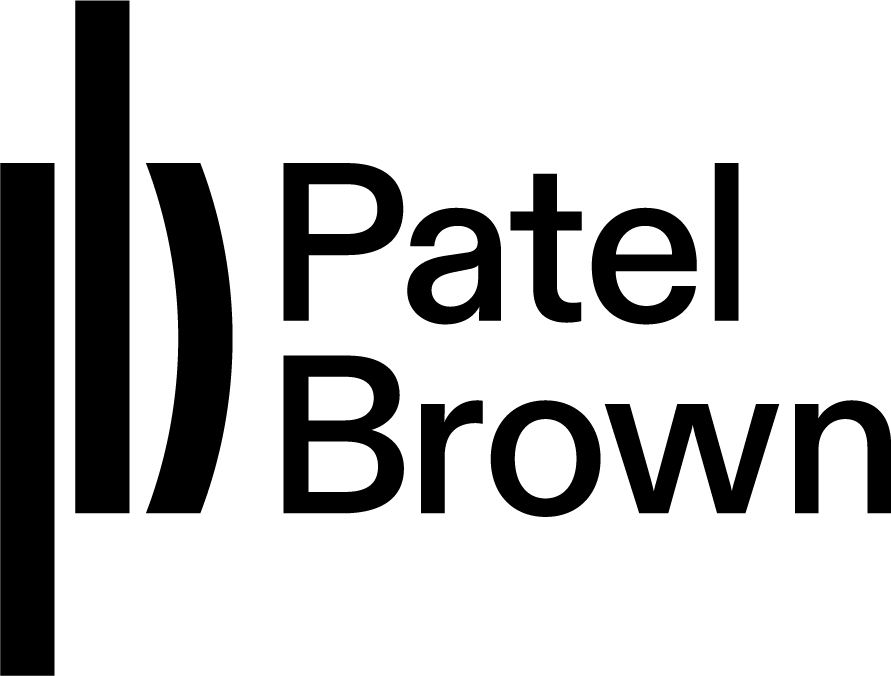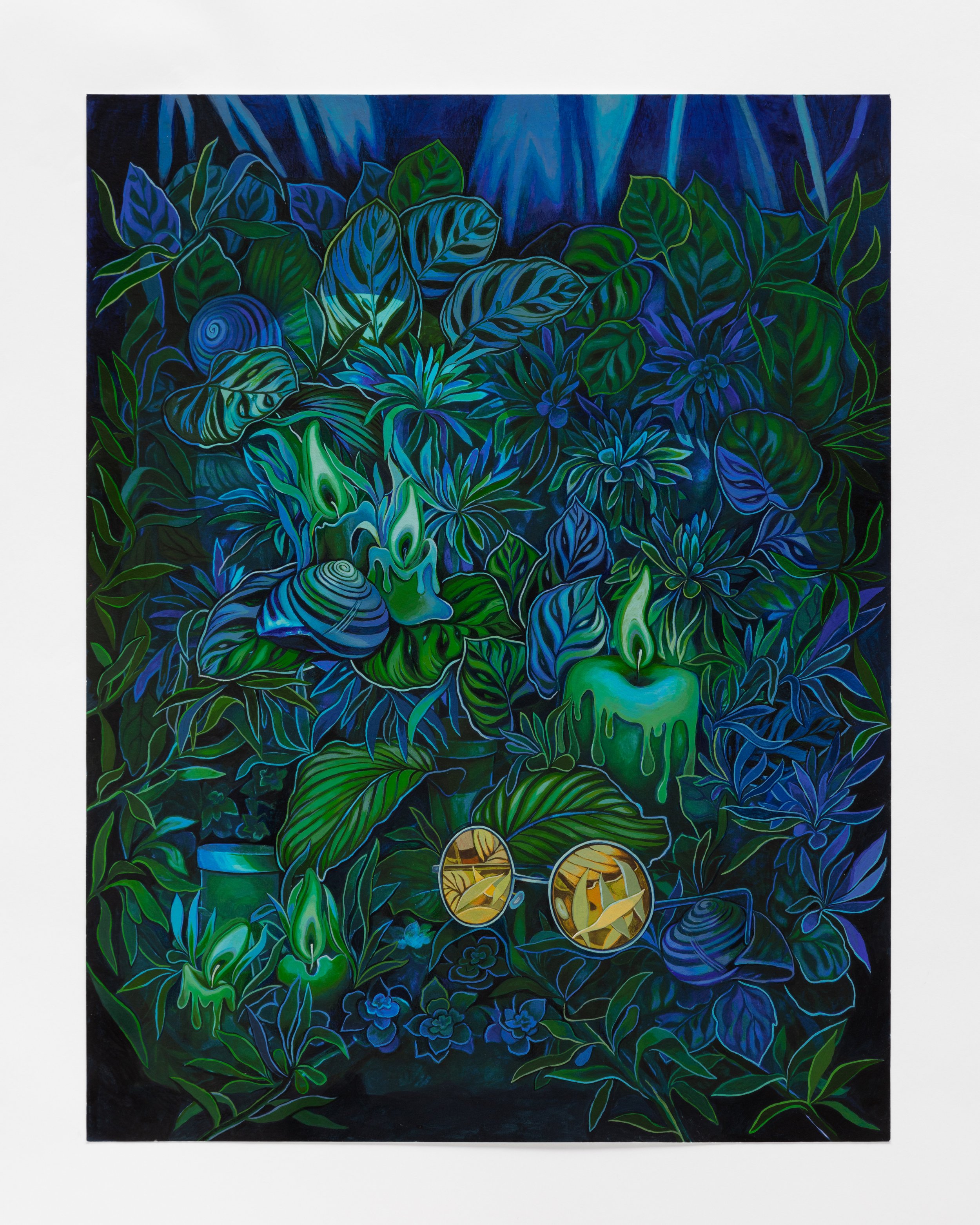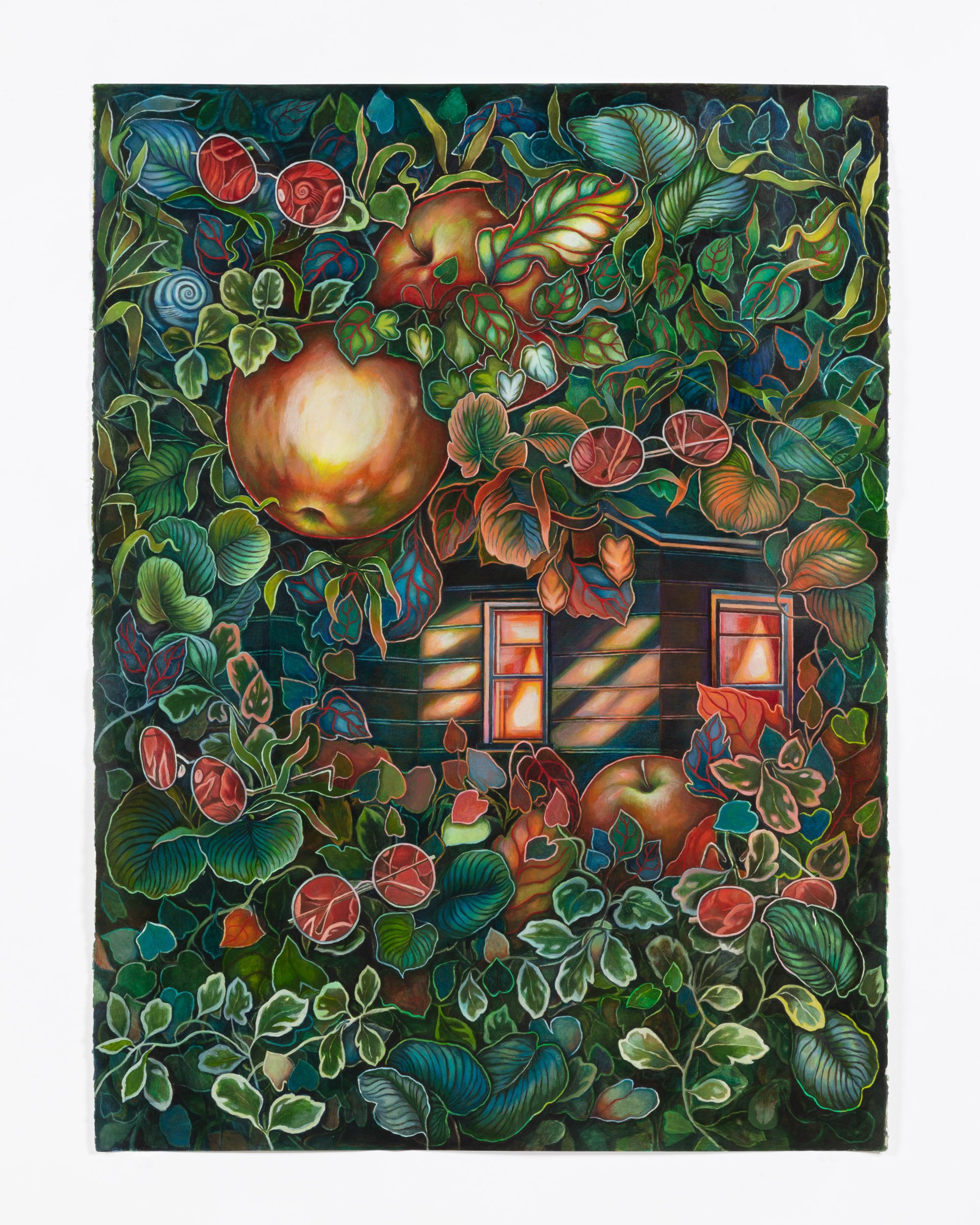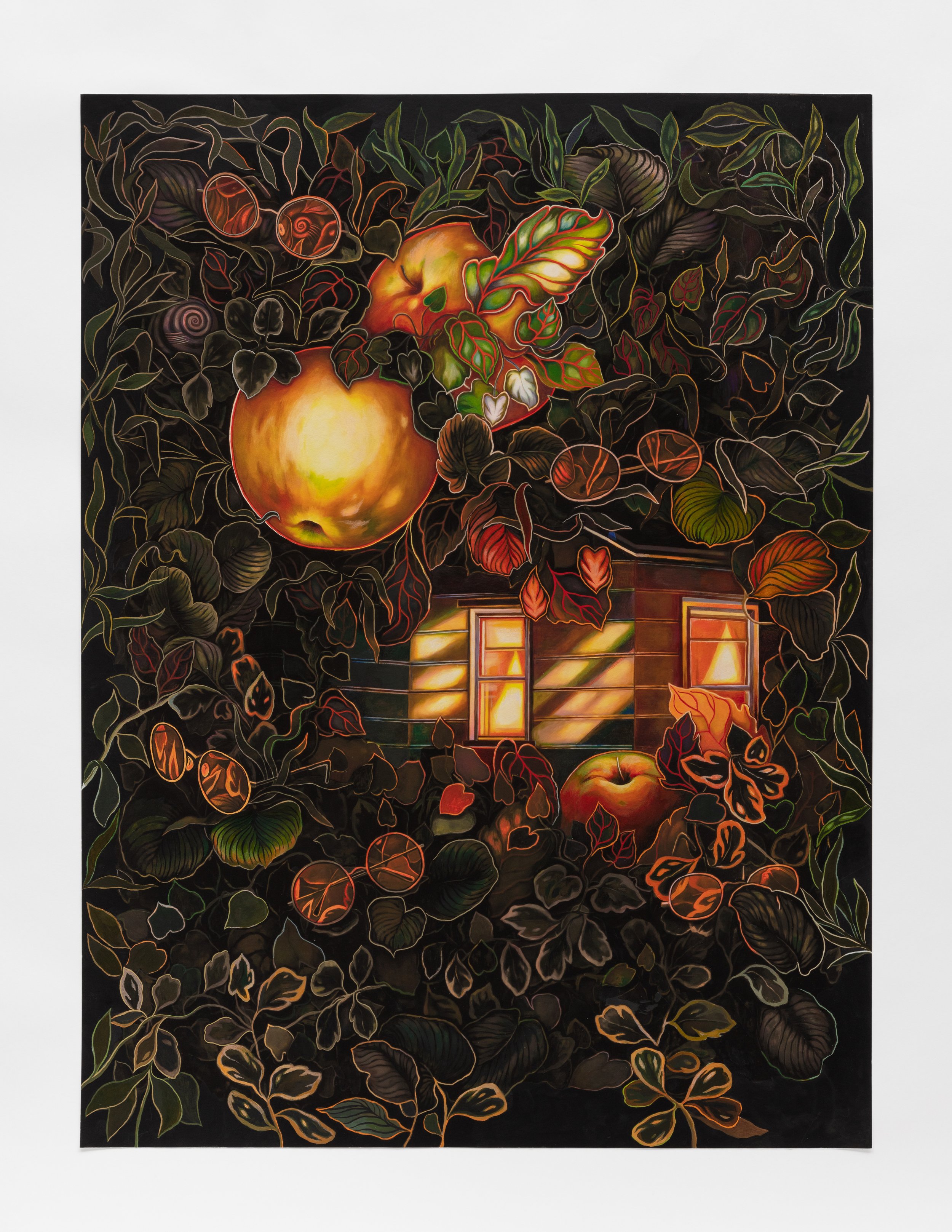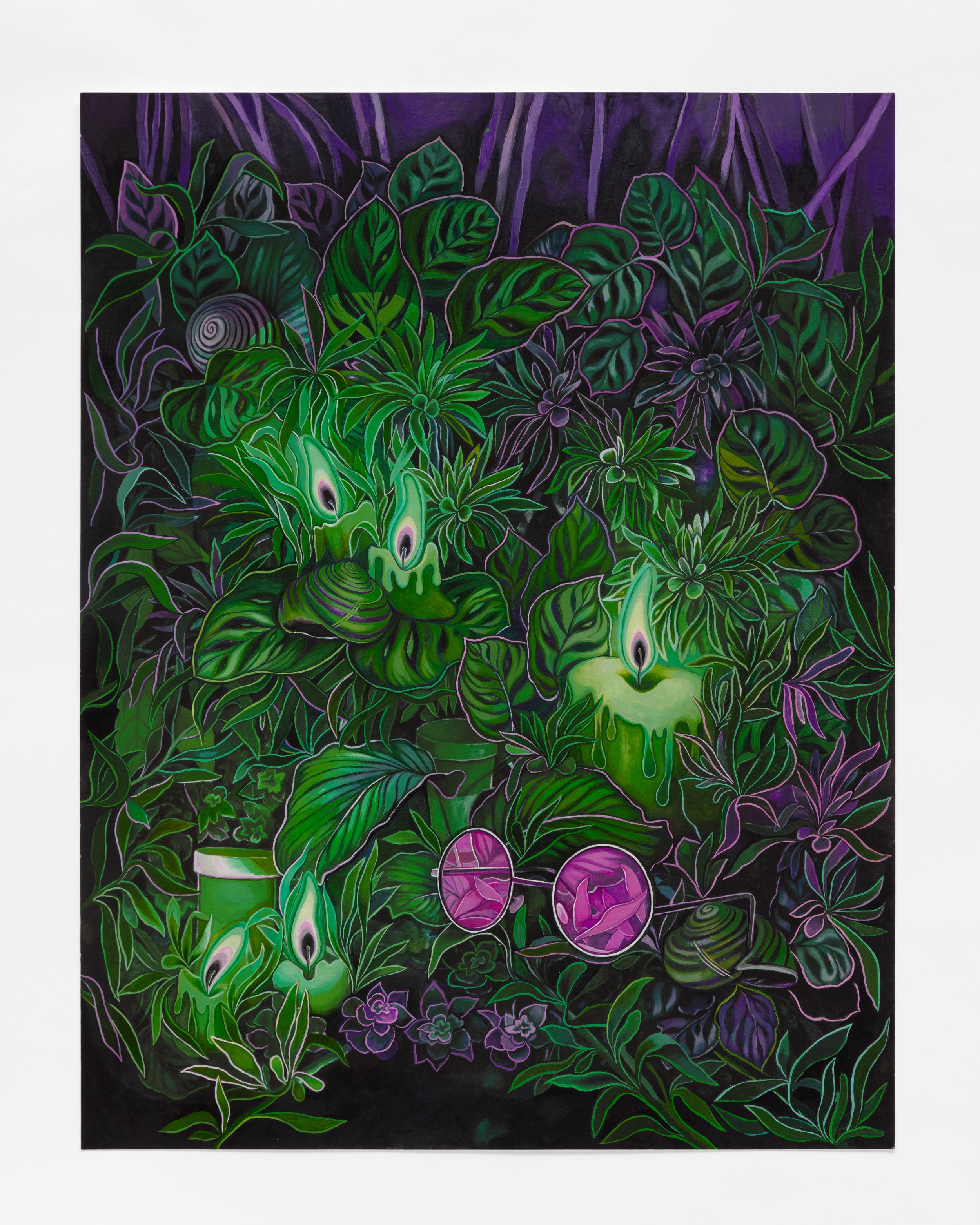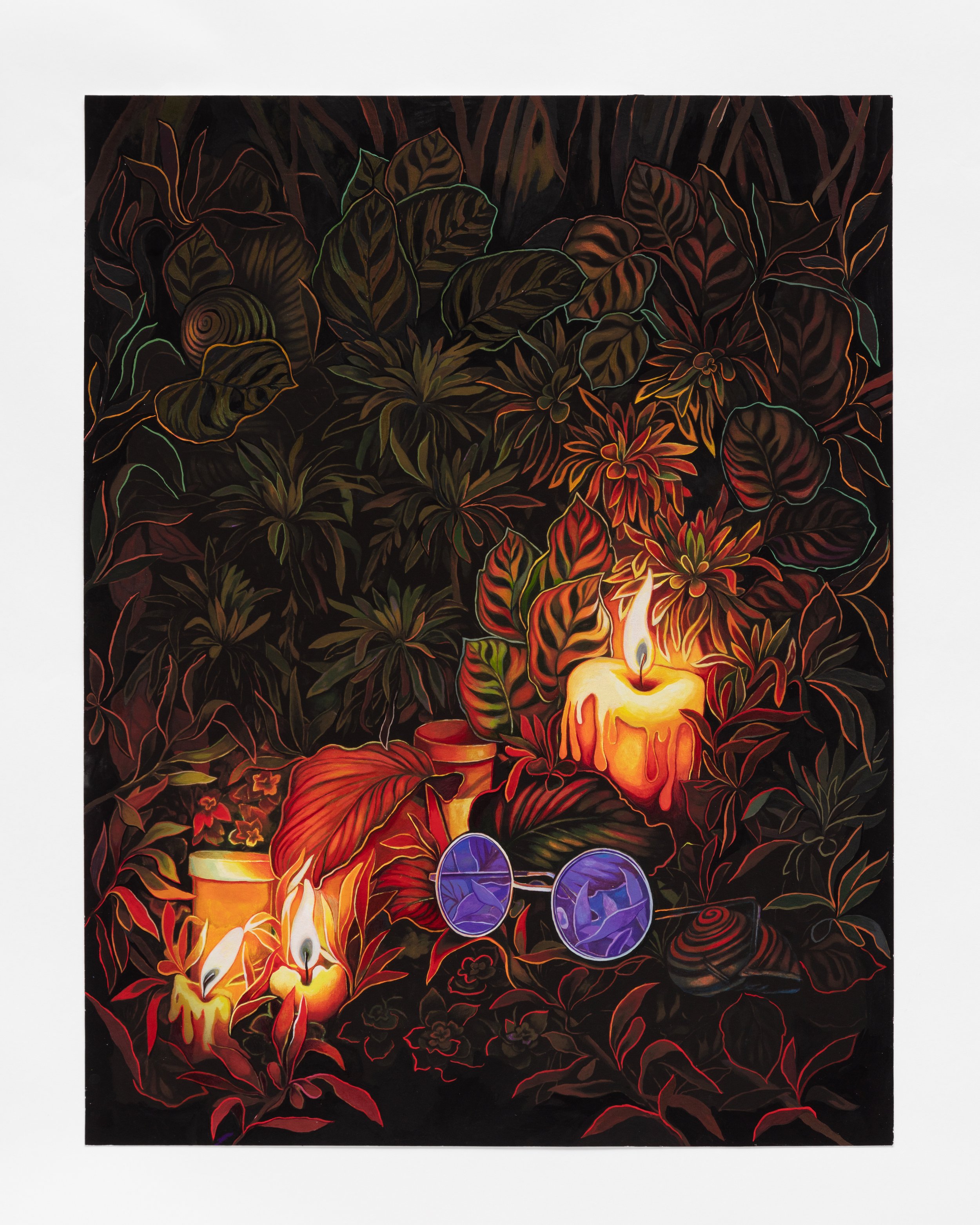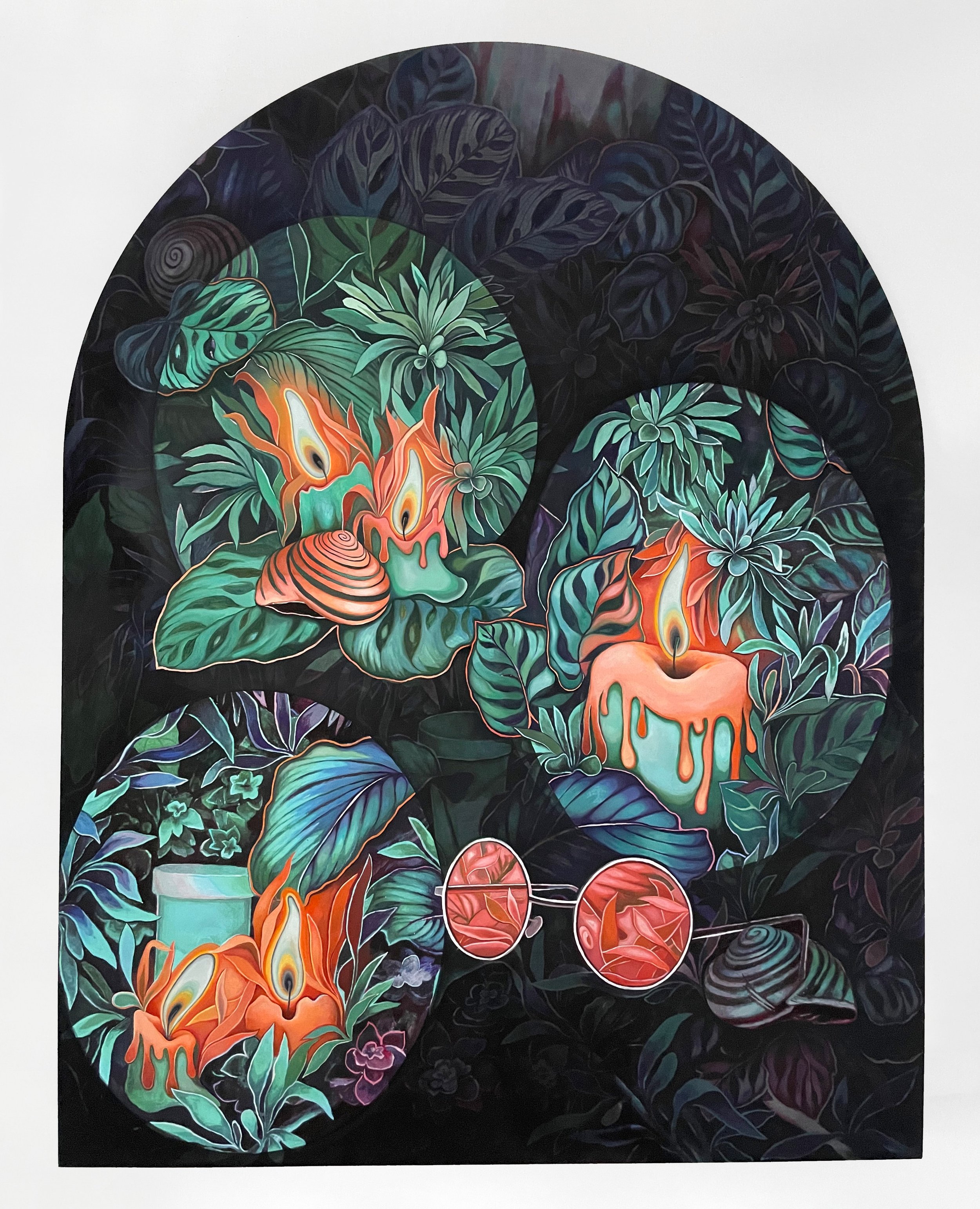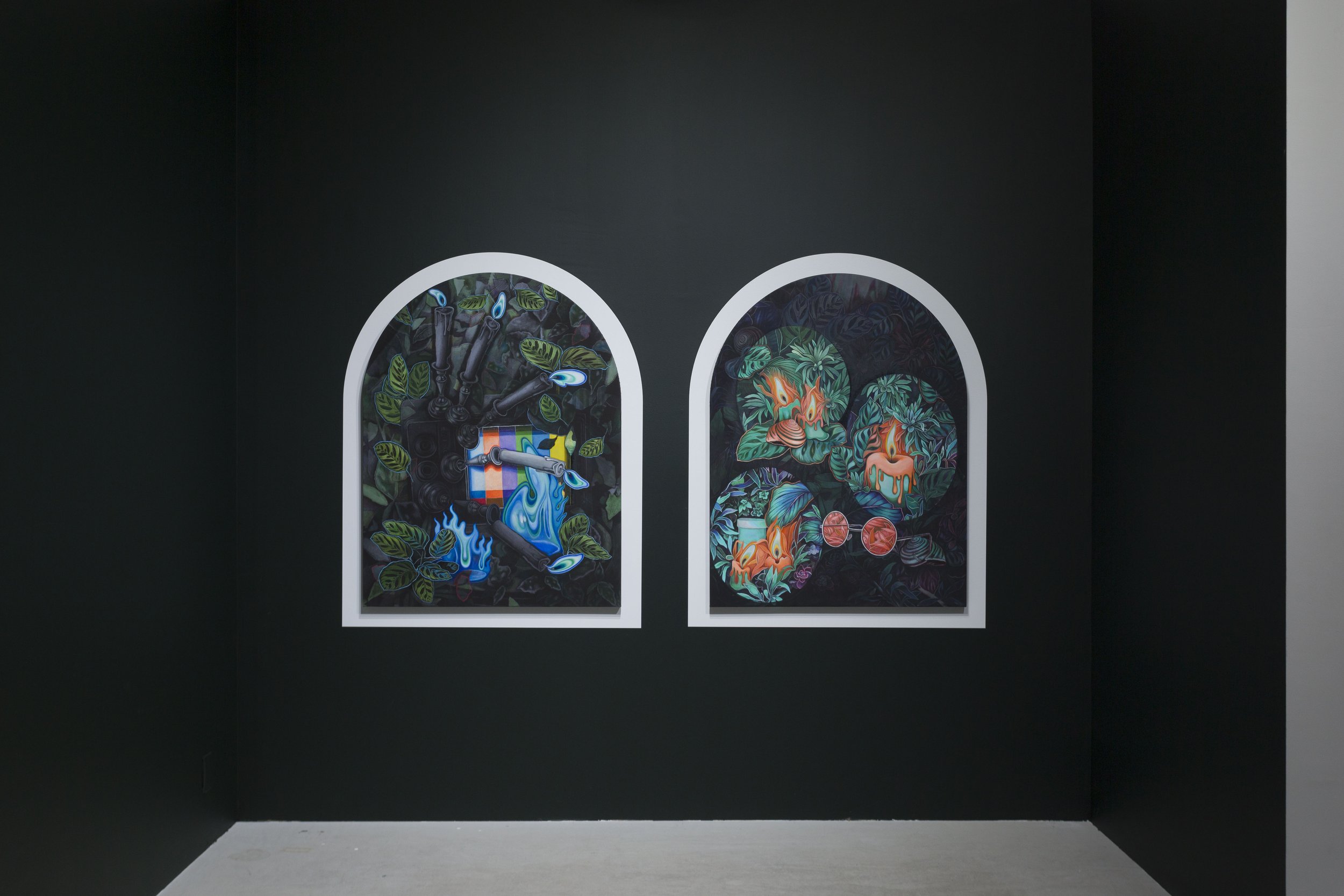PATEL BROWN GALLERY | 21 WADE AVE
Jenna Faye Powell | Is This THe RIght Mountain? | June 25 - JuLY 23, 2022
the house
In Jenna Faye Powell’s drawings—an eye spy of collected objects nestled within lush greenery—objects float, defying gravity. The surreal compositions lack context and provide insight: vignettes of emotion, permission to daydream, and a sense of foreboding. The drawings in “Is this the right mountain?” at Patel Brown Gallery invite narrative speculation, while the saturated reds and turquoises make it feel as if you’re looking through 3-D glasses at a movie theatre. A dystopian drama. A domestic thriller. A survival story set in the woods. All with the possibility of a happy ending, most likely. “The exhibition title is meant to embody a naive optimism, an outlook that is helpful when embarking on any risky endeavour or campaign,” explains Powell. “Only by climbing the mountain, will you know if you’ve made a grave error,” she continues.
The content of these drawings is familiar. A medley of flora hosts the contents of what you might keep in a bag. Light sources are scattered around haphazardly—flashlights and candles from characters unseen set the mood throughout the exhibition. A house in the distance beckons like a siren, a familiar structure with potentially dangerous consequences. There’s the sense of a trip is about to be departed. The traveller is met with two choices: return to the comfort of the home or take your chances in the wilderness. As Powell states, these works “envision what part ‘future us’ might play in the sci-fi story of our not-so distant future.” The recurring themes of solace, sanctuary, and mental health in the face of impending disaster in Powell’s work become more pertinent each year. As temperatures rise and the dystopia we’ve been promised creaks in slowly rather than with a bang. Likewise, nature overtakes the composition in Powell’s work—as if it’s about to break free from the corners of the paper—an inescapable reality.
In the series “The centre cannot hold,” a warm light holds vigil inside a cabin. Who is inside waiting? The scattering of snails echoes the decision of the drawing’s protagonist, who views the house as if crouching in the bushes. Half concealed by a shell or a bush, the question becomes whether to retreat in fear, or exit and risk vulnerability. Powell’s drawings beget the question of safety. Which is safer: the home or the woods? The assumption that a home is a shelter assumes that whoever is inside isn’t worth fleeing from.
“Would a bird build its nest if it did not have its instinct for confidence in the world?” asks Gaston Bachelard in his 1957 book, Poetics of Space. The act of slowly building, the hoarding away of objects to create an expansive ecosystem, is a primal act of optimism. This idea of nesting for disaster is consciously and subconsciously present in society. For example, the children’s game of answering: “What three objects would you bring to a desert island?”. Even within relative safety, we are preparing ourselves for future survival. In Powell’s case, her answer is a flashlight, eyeglasses, inhalers, and prescription medication. If the apple was once a symbol of the ‘Fall of man’, it is reclaimed as a symbol of sustenance and comfort in Powell’s drawings. A gift from the environment that ensures nourishment. The drawings are nests, gathered objects of what might be needed to survive, both appearing foreboding and offering a solution of how to survive.
Powell’s drawings impart the sense of being lured into the forest—a false sense of protection bound to turn on you in an instant. In the forest, there are a million places to hide. And also a million places to get lost. “We do not have to be long in the woods to experience the always rather anxious impression of “going deeper and deeper” into a limitless world. Soon, if we do not know where we are going, we no longer know where we are,” writes Bachelard. Here is a reality: there are many who would choose the unknown dangers of the woods over the known danger inside a house. The fight or flight response embedded within Powell’s drawings is projected onto a future scenario—yet is something that we have practice with daily. The act of surviving constant dangers (environmental collapse, social injustices and impending catastrophes), while living our normal, mundane lives of going to work, cooking, cleaning, prepares us for what the future might bring.
The lack of geographical markers in Powell’s drawings—tropical plants grow alongside poplar leaves—allows for an expansive daydream. There’s the sense of being so deep inside an ecosystem, or the future, that geography and weather systems start to blur. In Powell’s cinematic universe, humans are insinuated, present only in an array of personal objects. What remains are lush forests, thriving vegetation, and snails. In the drawing “I’m sure the moon will be fine,” a shrine of candles and personal objects creates the sense of moving on.At the end of the day, as Powell notes, I’m sure the moon will be fine—and I’m sure it will.
- Tatum Dooley
Jenna Faye Powell is a Canadian artist, writer, and arts administrator based in Toronto, Ontario. With a deep interest in intersections between art, environmentalism, and ideas that enact social change, she self-identifies as an optimist. She has attained an MFA degree from the Nova Scotia College of Art and Design University (2012), as well as a BFA degree from the University of Western Ontario (2009).
Powell has exhibited nationally and internationally in various solo and group shows; selected exhibits include Brave New Worlds at Museum London, the Windsor-Essex Triennial at the Art Gallery of Windsor, and Blue Monday at Robert McLaughlin Gallery. Powell was a finalist for the 2012 RBC Painting Competition, and recently completed residencies at the Vermont Studio Centre (Johnson, Vermont) and SÍM Residency Centre in (Reykjavik, Iceland) with an upcoming residency at the Annandale Artist Residency (Cardigan, Prince Edward Island). Powell currently works as the Operations Manager for Partners in Art.
Tatum Dooley is a writer and curator living in Toronto. She writes widely on cultural trends in art, architecture, fashion, and technology. Her writing has appeared in Artforum, Bordercrossings, Canadian Art, Editorial Magazine, Garage Magazine, the Globe & Mail, Lapham’s Quarterly, Hazlitt, Vogue UK, and The Walrus.
